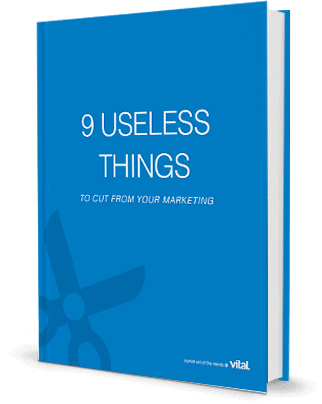If you’re a blogger or digital marketer, chances are you’ve slogged through dozens of blogs about blogging. In fact, you may often find your inbox clogged with a backlog of blogs bearing titles like:
- 30 Top Blogs by Top Bloggers Under 30
- How to Write 21 Blogs in Less Than 5 Seconds
- Hair of the Blog: 15 Cocktails to Cure Your Blogging Hangover
Studies show that 90% of all bloggers and inbound marketing pros have read an average of 44.3 posts on the topic of “blogging best practices.” So nobody could blame you if the very thought of reading yet another blogging blog has you muttering to yourself, “Blog. Blog. Blog. Whatever.”
And it’s true, the market is pretty well saturated. Blogging best practices? Been there, blogged that. That’s why we decided to blaze a new trail into unblogged-about territory.
But first, a bit of keyword research. Strangely, there is no apparent search volume for “blogging worst practices.” However, the keyword wizards at Moz.com provide helpful data about people searching such related terms as: “blogging,” “how to blog,” “blogging tips,” “blogging 101,” “blogging for dummies” and, of course, “what is a blog.”
According to the internet, “blog” is a portmanteau of “web” and “log.” I like to use this handy mathematical formula (web + log = weblog – we = blog) so I never forget what a blog is while writing a blog entitled: “How to Write Blog.” Now for some tips.
Blogging Worst Practices: 19 Essential Tips
- Avoid having a goal with your blog, as focusing too much on conversion strategy can inhibit your random creative impulses.
- Pepper your posts with garish CTA buttons containing in-your-face action words like “Buy Now” and “Submit.”
- Brainstorm content that is completely antithetical to your brand and what it stands for.
- Don’t be too focused on getting “leads” or “conversions,” or creating opportunities to earn “revenue.”
- Launch a monthly feature titled: “Clicking This Link May Infect Your Computer with Malware.”
- Be disorganized and veer off topic to keep the reader guessing.
- Talk down to the reader.
- Publish your blog posts on a regular schedule (ideally 8 posts released simultaneously at 2:15 a.m. on the third Saturday of every month).
- Avoid time-consuming research.
- Be mindful of the buyer’s journey by urging them to “man up” and “get with the program” by purchasing goods and services they don’t want or need.
- Engage your target audience on social media by mocking them if they critique your post, using high-volume insults like “dummy” (monthly search volume: 6.5k-9.3k), “pinhead” (11.5k-30.3k) and, of course, “snowflake” (70.8k-118k).
- “How To” posts are said to rank well in search engines, but most of them have already been done. So look for fresh opportunities like:
- How to Earn Millions in Your Own Home by Stuffing Your Face with Candy and Cupcakes
- How to Make a Deviled Egg Without Kitchen Utensils, a Stove or Eggs
- How to More Effectively Irritate People You Hate
- How to Get Rid of Ants in Your Pants Without Using Toxic Chemicals
- How to Write ‘How To’ Blogs That Electrify the Blogosphere
- Ideal blog length: According to 19th-century Russian literary blogger Leo Tolstoy (“War vs. Peace: Which is Right for You?”), long posts can actually be quite successful. The “sweet spot” is said to be between 2,250 and 587,287 words.
- Include outgoing links to explicit content and NSFW websites.
- Brainstorm unexpected, attention-grabbing post titles like: “10 Reasons Why You Should Eat Paint Chips,” “The Ultimate Guide to Asbestos & Children” or “Please Do Not Read This Blog: You’ve Got No Time for Such Foolishness.”
- Write puzzling, nonsensical titles to keep the reader off guard, such as: “5 Reasons You Should Stop Breathing for at Least 5 Hours a Day” or “Mahatma Gandhi vs. Don Draper: Who Looks More Dapper in a Diaper?”
- Readers love statistics, so pack your piece with random numbers and stats. (In an imaginary survey of umpteen blogging gurus, 14% to 235% forecast a 44% likelihood that the use of statistics may or may not rise by 13% to 64% in 2019.)
- Finally, remember NOT to write relevant, engaging blog content. That is soooo 2016. Instead, differentiate yourself from the content marketing pack by spinning convoluted, rambling yarns stuffed with keywords that have no connection to your subject matter.
If these tips seem counter-intuitive, that is because they most certainly are. In fact, elevendy-seven percent of internet users would probably agree that this is either a devilishly clever marketing humor blog or a horribly misguided collection of disastrous blogging tips gone haywire.
It doesn’t take a Seth Godin or a Neil Patel to understand that you should do the opposite of the potentially disastrous worst practices enumerated above. That said, no “blogging worst practices” blog would be complete without this one final tip.
- Use clichés !!!
That’s right. Forget those dime-a-dozen naysayers who say you should avoid clichés like the plague. Now more than ever in today’s highly competitive marketplace — crowded with scalable SEO strategies on steroids and next-generation, lead-generation solutions — the bottom line is this.
To truly be a game-changing thought leader, it’s essential to circle back and proactively think outside the box so you can strike while the iron is hot and go the extra mile to take your client work to the next level.
At the end of the day, you may think you have limited bandwidth, but when push comes to shove you may just need to bite the bullet and push the envelope on your core competencies to move the needle on creating win-win situations that maximize customer satisfaction.
But that’s just my two cents’ worth.
Oh, I almost forgot, one worst practice that is absolutely vital: when blogging, never include internal links back to your own website!







